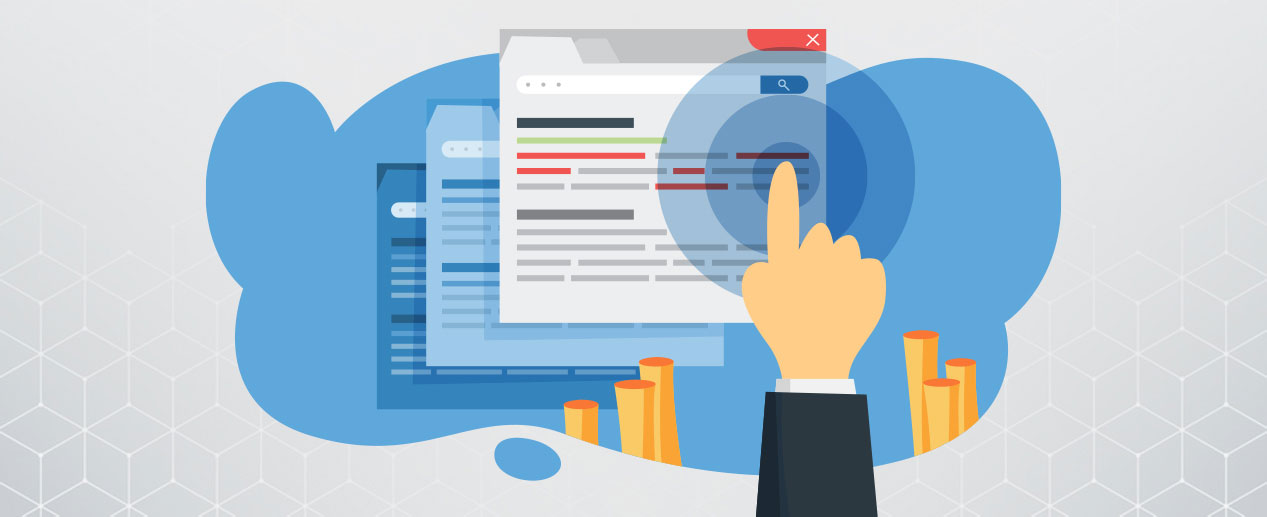Why Data Analytics for Digital Marketing?

Data analytics serves as butter on the digital marketing loaf! It adds the flavour of value to the stuff which otherwise may have been bland and dry. Though the amount of data derived with every petite marketing activity may overwhelm you, so it makes sense to sieve the heap of data analytics, to determine the ones that really matter. You cannot just keep boggling your mind analyzing the enormous amount of data that keeps accumulating with every digital footprint received. You certainly need to fish out the quality data that is worth analyzing for driving your digital marketing strategies that sail your business through the right direction.
Let’s scour through the analytics that you should be determining. You may wonder, what to determine, as the bigger the figure, the better it seems to be turning out for analysis. Even a digital marketer is a human and owing to that, tends to get caught up with vanity metrics.
Table Of Content
Understanding Vanity Metrics

Well, vanity metrics refer to those astounding figures or numbers that look great on data charts but hardly contribute to informed decision making. In other words, they look attractive but don’t do any good to understanding the performance.
For example, you get whopping 70K ‘likes’ on your Facebook post, but just 10 visits on the website, led by the same post. So, which number will matter to you more? You would certainly be enthralled with the number that is higher, but all that would ultimately matter to you is 10, as it is something that is more close to your sole objective – Conversion.
The data that is driven towards generating ROI and offers an actionable insight into your performance, is the actionable data, while the one that though looks appealing but does not have capability to derive measurable conclusions is not worth the analysis. Of course, you would simply want to flaunt it to your competitors, won’t you!
However, it is crucial to identify the quality data that translates the customer behaviour, and should be analyzed for driving informed conclusions, and devising digital marketing strategies.
Website Speed Performance
This lays the first impression of the website on the visitor, and can be very annoying for them, if is not optimized. The quicker a website or a requested web page opens up, the better response and engagement does it receive, which are the key factors driving conversions.
The bounce rate on the website goes higher with every passing second, as shown below –

Determining the website abandonment rate led by the website load speed clearly command you to include in your marketing strategy, the website speed optimization. This can be done by using CDN to minimize the distance travelled by the information from one source to another, compressing the images, cut-down on the HTTP requests, keep your code clean and compressed, and lot more.
Know about: 6 Quick Tips to Speed Up Your Website!
Traffic/Number of Visitors
This may sound like another vanity metric but if fragmented, can provide great insights into the performance, and therefore be vital for the digital marketing strategy.
The overall traffic or total number of visitors can be fragmented on the basis of their source, into –
- Organic Traffic – received as a result of search engine optimization of the website, through a query.
- Inorganic or Paid Traffic – received as a response to your paid ad, through clicks on it.
- Social Traffic – led to the website by social media marketing.
- Referral Traffic – on account of the referrals on another website.
- Direct Traffic – directly by typing the URL of the website.
Once you know that the traffic generated on your website is mostly through the paid ads, you would focus on driving organic traffic in your next strategy. There are many tools to analyze the website traffic. Here’s how a traffic source analysis report by HubSpot looks like –

The analysis of social media traffic also helps in building the apt social media plan for further marketing. Another example of traffic analysis report by Google Analytics is –
Also, there are many content management systems (CMSs) that let you analyze the traffic you receive on your website or social media page.
Apart from this, traffic analysis should also include understanding the user online behaviour on your website, their interactions, and lot more like –
- The amount of time spent on the website
- Web pages on which they’d spent most of their time.
- Actions of the visitors on the website such as clicks, downloads, purchases, etc.
- Point at which they left the website.
All these findings eventually shape up your effort in patching up exactly where your website may be lagging behind, and guide you in developing the precise marketing plan accordingly.
Audience Engagement

Just like the data on total number of audience, social media performance metrics may also sound like vanity metrics, as they are generally associated with reach or the visibility of the website or any social media post or ad, and may quite be impressive for the bosses to know.
No matter, how wide the reach of your social media may go, it stays inert unless reaches to your potential customers, or those interested. Therefore, you need to fragment social media metrics as well, to sieve through the crucial aspects like audience engagement for data analysis.
The audience engagement most importantly, refers to the number of ‘likes’, shares and comments on a social post. For a website, it refers to the user’s clicks, interactions, response to the query or Contact form, purchase action or conversion, and revisits to the website.
All this can be achieved if the right audience is targeted, and if you are already driving good engagements, find out the source. If it is through social media, then you get a clear message to include augment your social presence further, apart from optimizing your website for similar performance.
Click-Through Rate

The click-through rate is generated with paid campaigns that are targeted at a specific audience on the basis of a specific criteria. Determining the performance of these ads is extremely crucial as by doing so you can further amplify your ad for better results. The lower click-through rate can be an indicative of certain vital aspects that you may not be focusing on, like target audience, their behavior, expectations from the ad, offer that is not as much lucrative for the customers, and issues related with A/B testing.
Even the landing page to where the ad may be leading, may need to be optimized more, as a part of digital marketing strategy.
Conversion Rate

This is the most desired action of the visitor or consumer, that all brands, businesses, and marketers aim at.
To evaluate conversion, first you need to determine its type you want to evaluate. Well, it may be direct or macro conversion, as well as indirect or micro conversion. So, the analysis may involve determining the number of downloads, subscriptions to the blog or newsletter, and even the response received on the contact form. All these serve as the pathways to turning the visitor to a customer.
If the performance on any of these sub-metrics is found to be low, you need to develop a highly engaging content that establishes trust of the people in your brand, and a relationship, that makes you a reliable source for them. You can do that by understanding their needs and giving them an assurance of their fulfilment.
Tracking conversions helps in identifying the users’ actions before they get buy from you. You can further optimize the user journey leading to conversion.
On the final notes
There may not be one-for-all set of analytics metrics promising to contribute to your marketing strategy, yet these are the inevitable metrics that serve as the bottom line, and certainly need to be focused upon, to conclude the marketing performance. The metrics are directly associated with goals for any business. So, work on these, and develop well-thought-out strategies that get on the table instantly.
The digital marketing strategies devised at Tarika Tech are based on data analytics, and are customized according to the specific requirements of every individual project. This allows us to provide value-driven digital marketing services.

